In November 2018, I completed Level 4 of the Sogetsu School’s course in ikebana studies in Tokyo. That achieved, I was asked to choose a flower name and granted certification. Afterwards I returned to Canada, bought and moved into my new home, and resumed ikebana studies with the class I joined in Victoria.
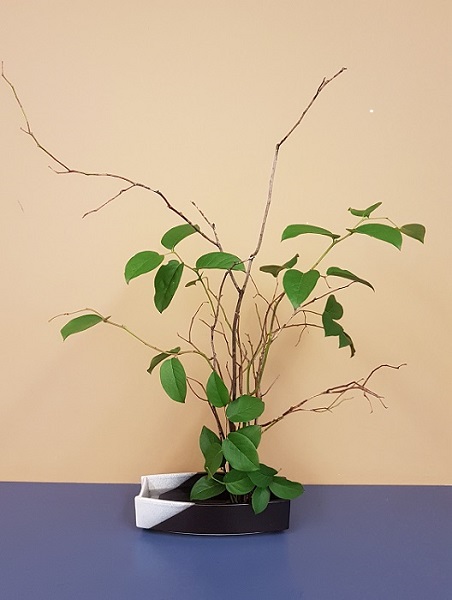
Though I had the option to do so, for numerous reasons I didn’t wish to immediately start Level 5. Instead, I thought I would benefit more from review of various themes from Levels 1 through 4. Doing that would allow me to experiment more freely, gain more experience with varied plant materials, and help me to hone the technical elements I have learned to date.
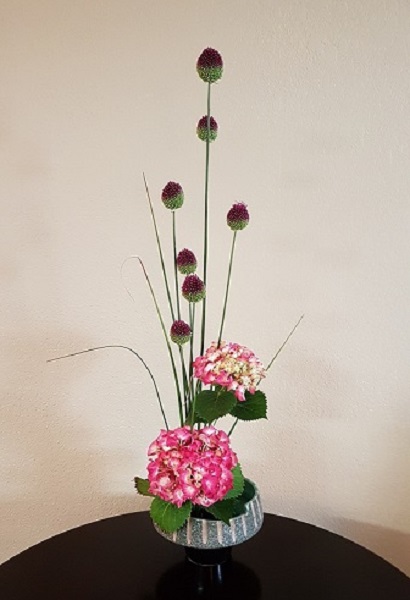
As a result, mindful of the Sogetsu tagline “the flower becomes me” and the direction to “deeply look into yourself” and “create new beauty,” I chose a single focus. I have focused on what the textbook describes as “discovering more pleasure of self-expression” and “pursuing ‘your ikebana’ [as opposed to someone else’s] further.”
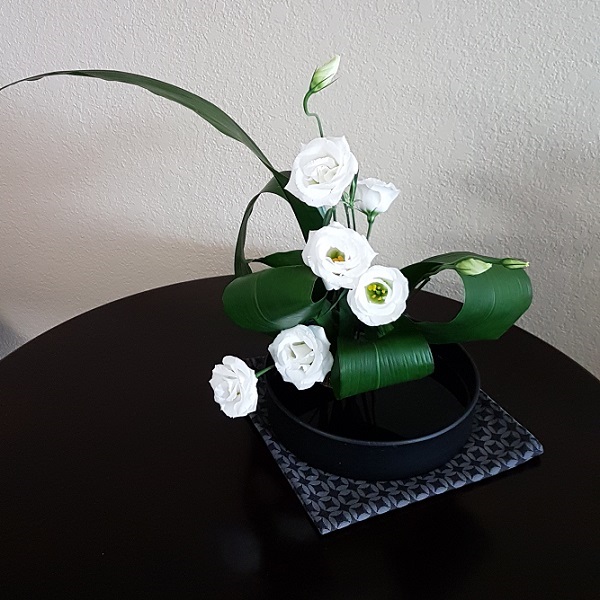
This is especially challenging on numerous levels as my options in Victoria are more limited. I can’t walk into a classroom where all the materials required are on hand. As I don’t have a garden I must source plant materials from the wild or purchase them from a florist. Moreover, it’s not uncommon for Canadian florists to prepare flowers for sale by removing the leaves from the stems. Alas, those leaves are needed for proper expression in ikebana.
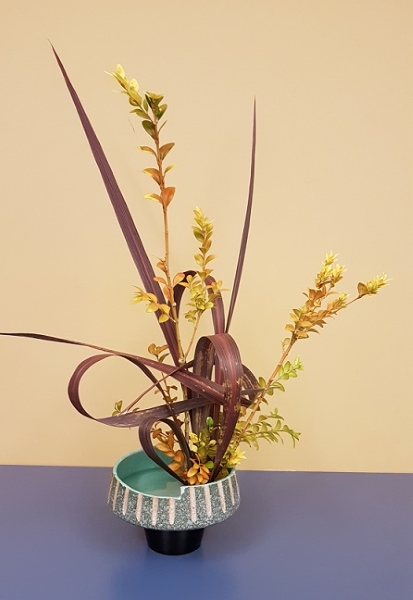
As well as materials not being Japanese varietals or groomed with ikebana in mind, what I can source here is often expensive. Not that it’s cheap or perfect in Tokyo, but there materials are included in the class fee. Sometimes I find whole plants on sale in nurseries and plunder those; however, that still doesn’t provide the scope of choices I have at Sogetsu Kaikan. When choices are limited, so is full creative expression.

After that, my expression is further restricted by the number of containers I own. Fortunately I have been able to acquire the specimens pictured in this post in thrift or consignment stores as well as estate sales.
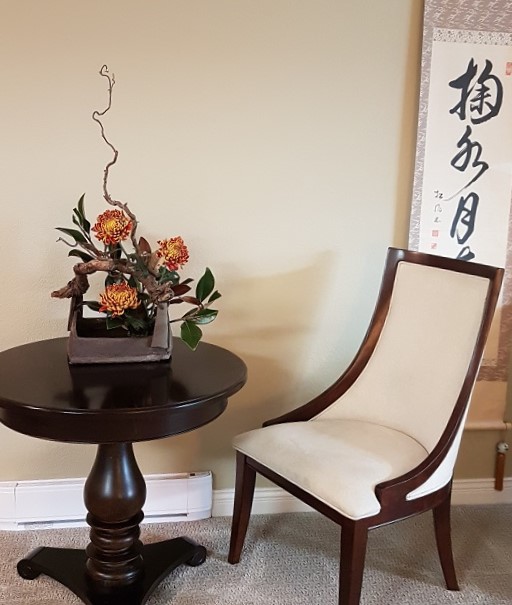
However, the range of containers available to me on two floors at Sogetsu Kaikan—most especially the extra-large ones which I have no place to store in a small condo–greatly enhances my options for creative expression.
Even so, flowers are forgiving and always beautiful even if my technical skills aren’t at mastery levels yet.
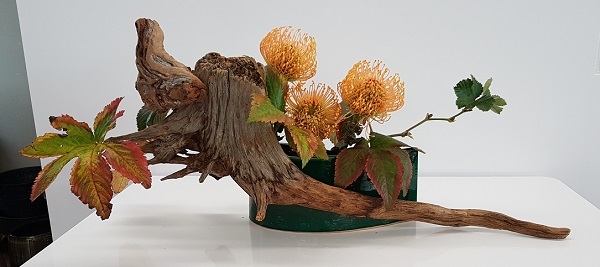
For example, the rather glorious mistake above didn’t follow the rules for the particular theme. Oops! My (splendid) bad.
Sōfu Teshigahara, founder of Sogetsu Ikebana and author of The 50 Rules of Sogetsu Ikebana states that beautiful flowers do not always make beautiful ikebana.
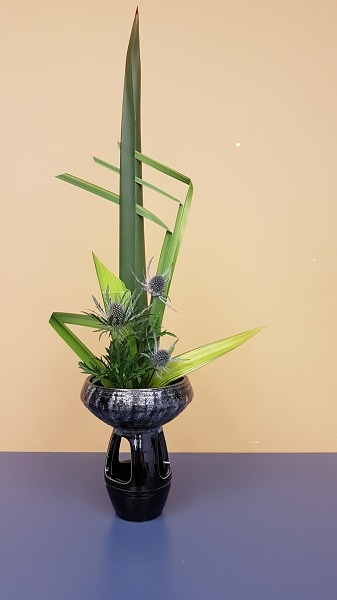
Sigh. It’s the first rule as well as the easiest and most beguiling one to break. Never mind. Each arrangement and every misstep teaches me more. I’m content to make progress.
